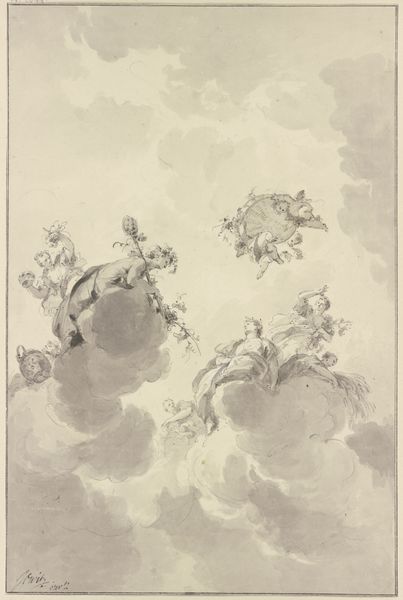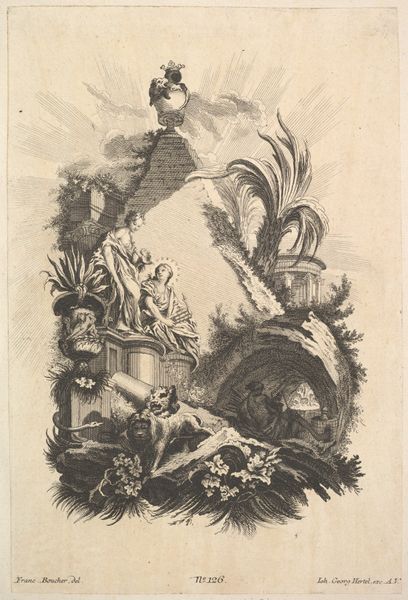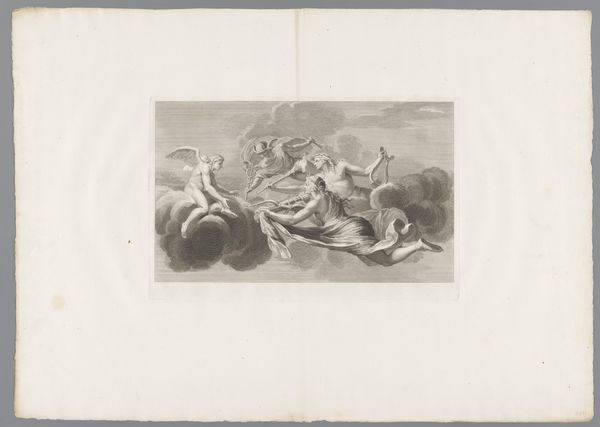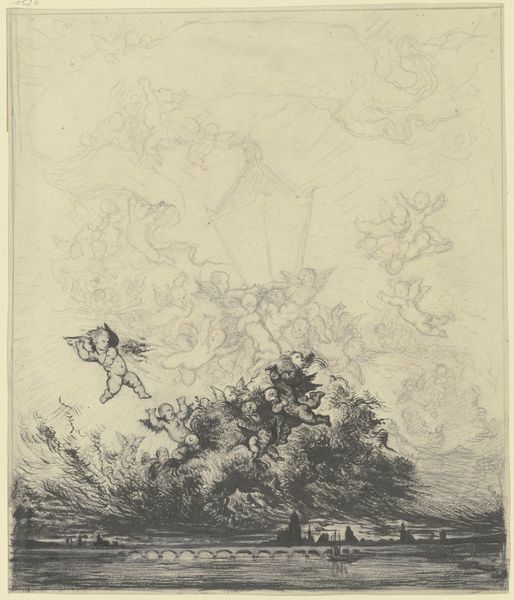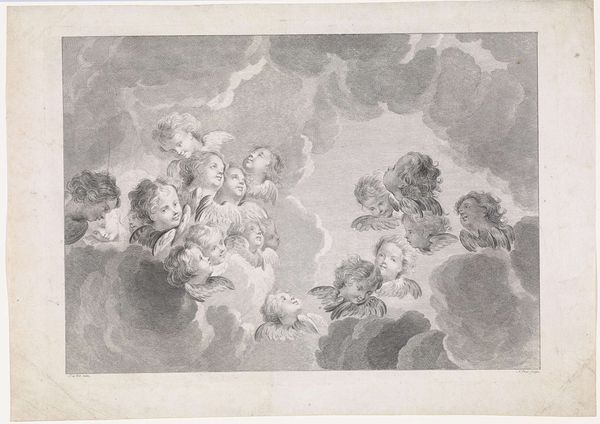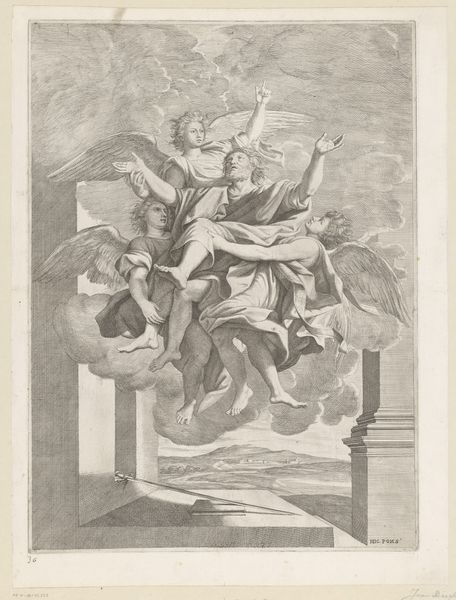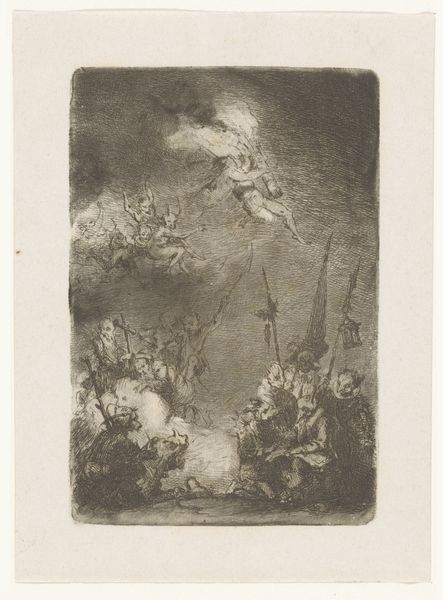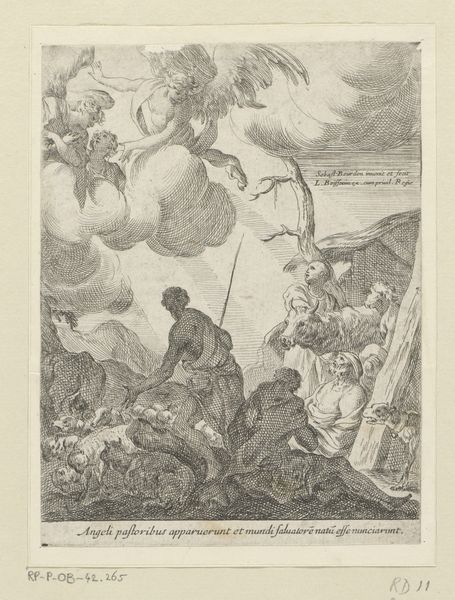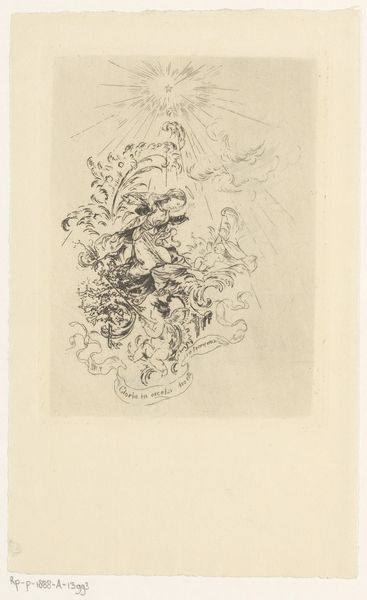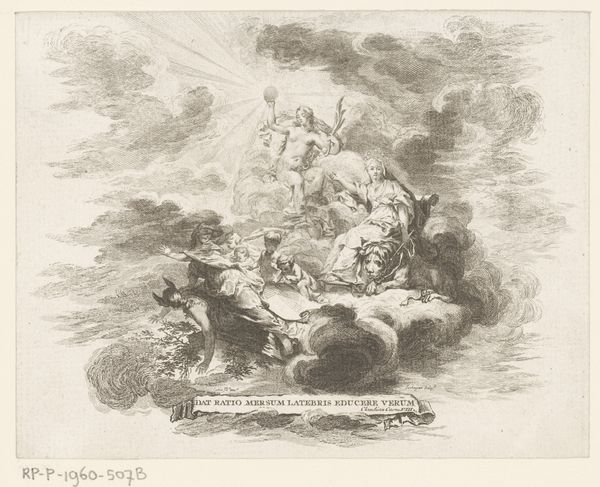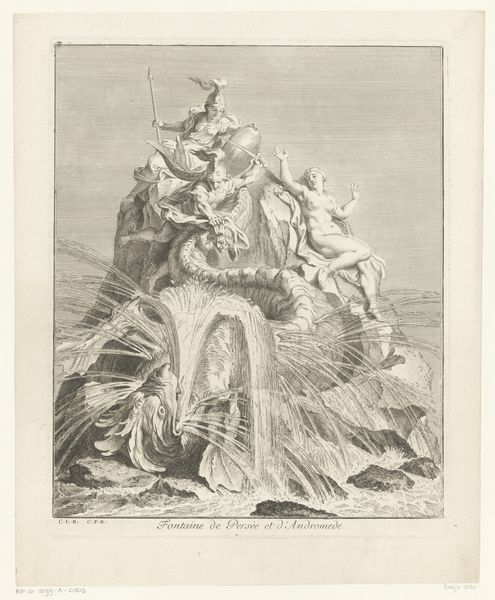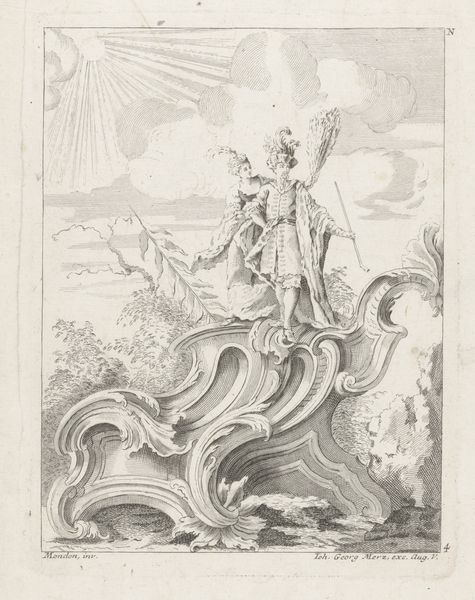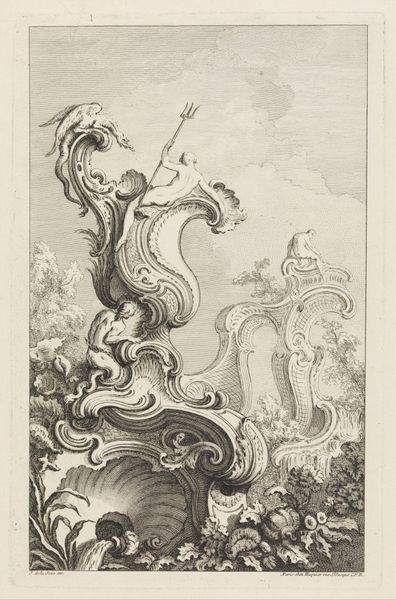
Christus aan het kruis, het bloed dat uit zijn wonden stroomt vormt een oceaan 1649 - 1681
0:00
0:00
francoisspierre
Rijksmuseum
engraving
#
baroque
#
figuration
#
history-painting
#
engraving
Dimensions: height 454 mm, width 271 mm
Copyright: Rijks Museum: Open Domain
Curator: This engraving, housed here at the Rijksmuseum, is attributed to François Spierre, and is titled "Christus aan het kruis, het bloed dat uit zijn wonden stroomt vormt een oceaan," dating from between 1649 and 1681. Editor: A visceral first impression. The flowing lines create a sense of immense suffering but also powerful movement. The relatively muted tones amplify the stark composition; Christ appears suspended between the terrestrial ocean below and the celestial clouds above. Curator: Spierre’s masterful use of line serves a clear purpose: to communicate Counter-Reformation theology. Notice how the blood literally becomes an ocean, reflecting contemporary religious emphasis on Christ's sacrifice and the sacrament of Eucharist, influencing collective spirituality. Editor: Agreed. Looking closer, observe the strategic distribution of light and shadow; the dramatic chiaroscuro, typical of the Baroque, intensifies the emotional impact. It directs the viewer's eye through a visual narrative, doesn't it? From the tormented figure on the cross, all the way through swirling cherubic figures and divine light illuminating a message about religious institutions and imagery in society. Curator: Indeed. Furthermore, one can't ignore the implications of an ocean of blood. This print visualizes theological doctrine during the era; it's more than mere illustration. It is powerful iconography. What do you observe about its function? Editor: Considering it's an engraving, it served likely a mass distribution purpose. Images like this reinforced prescribed social norms by evoking powerful emotions. It served to both comfort and instill a type of submissive guilt associated with early Christian moralizing. Curator: Precisely! Its influence cannot be overstated, both the effect it had on cultural standards through this particular artistic technique as a signifier during its period and also its symbolic value today. Editor: An apt reminder that visual art is hardly ever neutral and of how it shapes perceptions far beyond its initial aesthetic appeal.
Comments
No comments
Be the first to comment and join the conversation on the ultimate creative platform.
